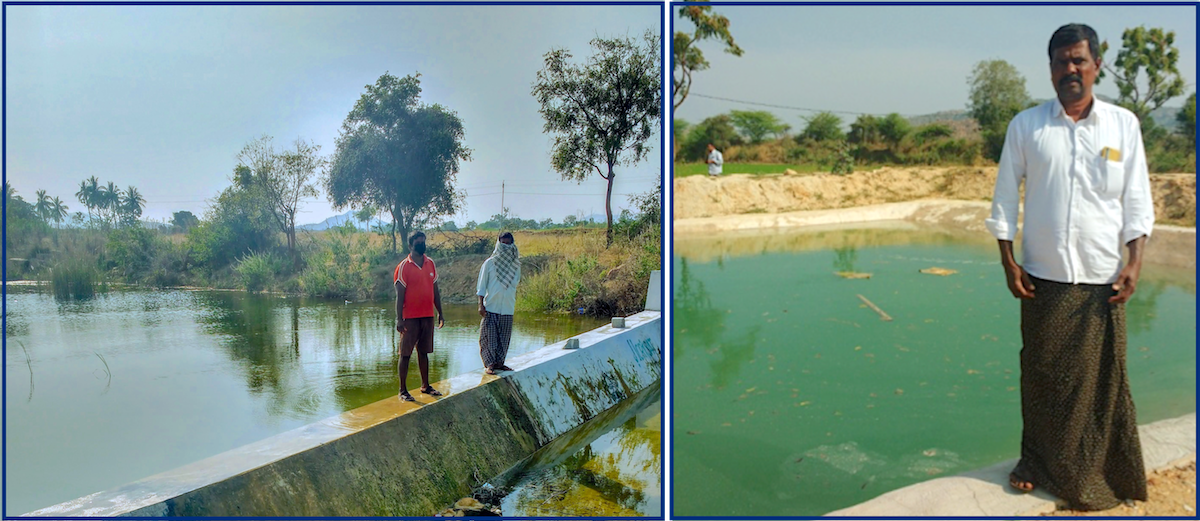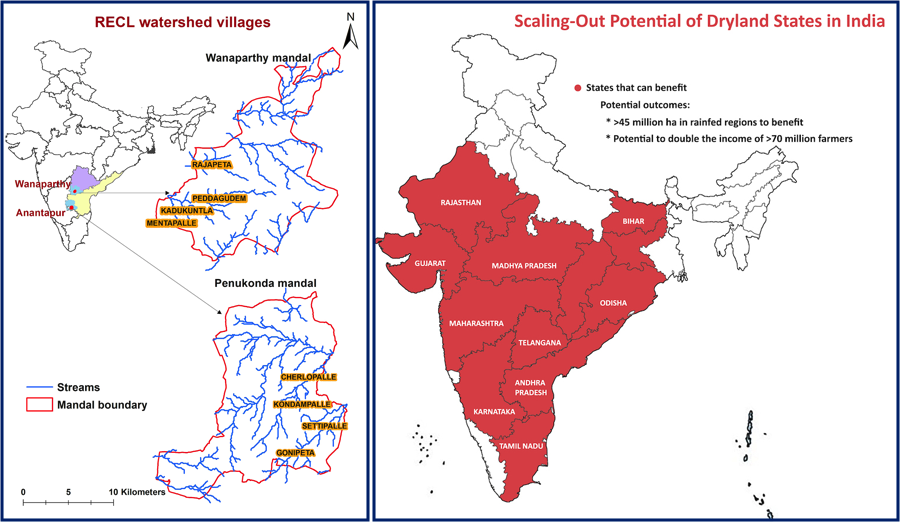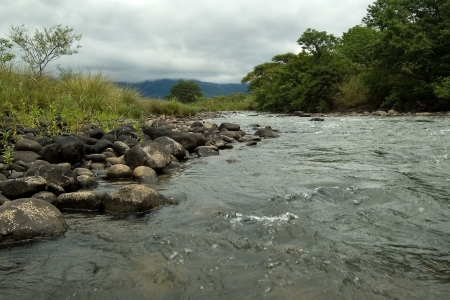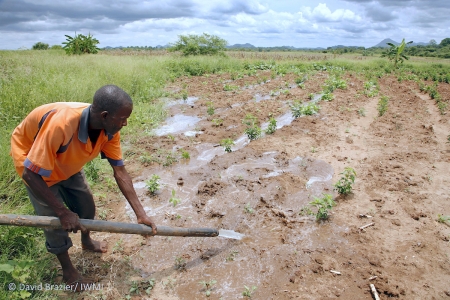In the semi-arid tropics water is a precious resource that often does not trickle down to small farms. Farmers who can afford borewells, save their crops during dry spells in the cropping season whilst others watch crops and investment dry up. Now, a CSR project led by ICRISAT has shown how watershed interventions contributed to a 2-meter rise in groundwater in Anantapuramu district, Andhra Pradesh state, South India. The RECL-ICRISAT watershed sites provide proof of concept for holistic solutions that improve system productivity and livelihoods. In project villages compared to non-watershed villages, even a 10-foot deep farm pond yielded quick access to irrigation water. Eighty new ponds dug during 2020-21 created extra storage capacity of around 16,000 m3 bringing the total to 66,000 m3, benefiting 1500 smallholders in the region by providing water all year through.
Remote sensing /GIS and hydrology studies coupled with ground truthing during the first phase of the project (2014-17), were followed by a series of check dams and other water conservation structures built in the region. This led to a steady increase in groundwater levels by up to 2 meters compared to non-watershed villages, creating a net water storage capacity of more than 50,000 m3. Because of the storage capacity generated, around 125,000 m3 rainwater gets recharged into the groundwater table, increasing water availability for irrigation and other uses.

Major water conservation measures implemented at Anantapuramu site include 58 farm ponds, 15 check dams, 256 rock-filled-dams/loose-boulder-structures, 43 open-well/borewell recharging pits and 7 sunken/mini-percolation pits.
Water structure interventions and good rains during the year, in some cases, contributed to an even higher increase in groundwater levels reaching up to 14 meters as in Kondampalli, one of the project villages. Today about 14 beneficiaries with 20 ha have benefitted, and about eight bore well recharge pits have ensured that water is readily available throughout the year. As many as 36 farm ponds were constructed in the village during 2020-2021, and more farmers are coming forward to build ponds.
In nearby Gonipeta village, twenty farmers and their families have benefited from the interventions, and more are keen on constructing ponds in their fields. The check dam built in the project's first phase ensured that about 16 ha of land have water available all year. Groundwater in some cases is now available at a depth of 2 meters providing enough water for cultivation during the rainy and post-rainy seasons.
Similar on-farm water storage solutions and productivity/livelihood initiatives are underway in Wanaparthy site in Telangana state. The RECL-ICRISAT watersheds are developing into exemplar sites as proof of concept for scaling critical on-farm solutions for climate resilience and improved livelihoods. It shows the potential way forward for increasing water access in drylands, and also for leveraging CSR to empower the underprivileged, while contributing to food security and ecosystem services.

This work contributes to SDGs 1, 2, 11, 13, 15 and 17.
Read more on Natural Resource Management on EXPLOREit
Project title: Farmer-centric Integrated Watershed Management for Improving Rural Livelihoods
Funding agency: Rural Electrification Corporation Limited, New Delhi, India
Partners: NGOs (Samatha Society for Rural Education and Development, Anantapuramu; BAIF Institute for Sustainable Livelihoods and Development, Hyderabad); Watershed Associations (Anantapuramu and Wanaparthy sites); Department of Agriculture, and line-departments (Andhra Pradesh and Telangana states, India); International Crops Research Institute for the Semi-Arid Tropics (ICRISAT).
Authors:
Girish Chander, Senior-Scientist, Natural Resource Management, Jemima Mandapati, Senior Communications Officer and Arun Seshadri, Scientific Officer all of ICRISAT.












